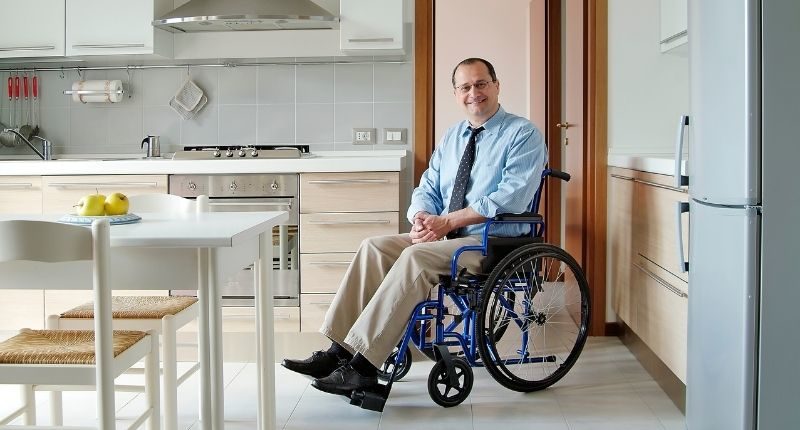- 73.6% of those living with a disability say their home is inadequate for their needs
- ACT Minister Rebecca Vassarotti to push for 'universal design' in a national code
- 'Accessible, affordable and sustainable housing is what our community needs', she says
The number of Australians with a mobility-related disability will increase from 2.9 million in 2018 to around 4.7 million people over the next 40 years, due to population growth and an ageing population, according to the Centre for International Economics.
In another report, from the University of Melbourne, nearly three-quarters of people living with a disability were living in a home not wholly suited for their needs. Worse, most other houses they wanted to visit – such as to see family or friends – were completely unsuitable.
The effects this can have on people’s quality of life and well-being are self-evident. 70% reported poor outcomes as to the ability of the carer to complete their work, or having a social life.
Call from ACT Minister
At the upcoming meeting of all the nation’s Building Ministers, ACT Minister for Sustainable Building and Construction Rebecca Vassarotti says she will call for mandatory accessibility standards in the National Construction Code, so that all future homes, townhouses and apartments meet a threshold level of universal design.
‘Universal design’ is the process of creating products that are accessible to people with a wide range of abilities, disabilities, and other characteristics.
“Imagine a world where every home is accessible or more easily adaptable for most people regardless of age, disability, background or other factors.
That’s what universal design is about.”
Minister Rebecca Vassarotti, ACT
“The standards will require simple features such as doors wide enough to accommodate wheelchairs and step-free access, a bathroom on the ground floor and structural reinforcements to allow for the installation of supports like grip rails if they are needed in the future.

“In the Parliamentary and Governing Agreement, we committed to all new homes should be built to universal standards, so if the changes to the National Construction Code are not agreed to by all Building Ministers, I will commence work to introduce standards for the ACT.
“Housing is a fundamental human right and accessible, affordable and sustainable housing is what our community needs to thrive.
Universal design has been standard in other countries such as the United Kingdom, she said, which first introduced basic accessibility requirements to its residential building regulations in 1999.
“Australia’s voluntary Livable Housing Design Guidelines have failed to provide adequate levels of accessible housing; it is estimated that only 5-10% of new homes in Australia are being built to accessibility standards,” she said.
~~
Report: Living with disability in inaccessible housing: social, health and economic impacts, University of Melbourne, 2020.








